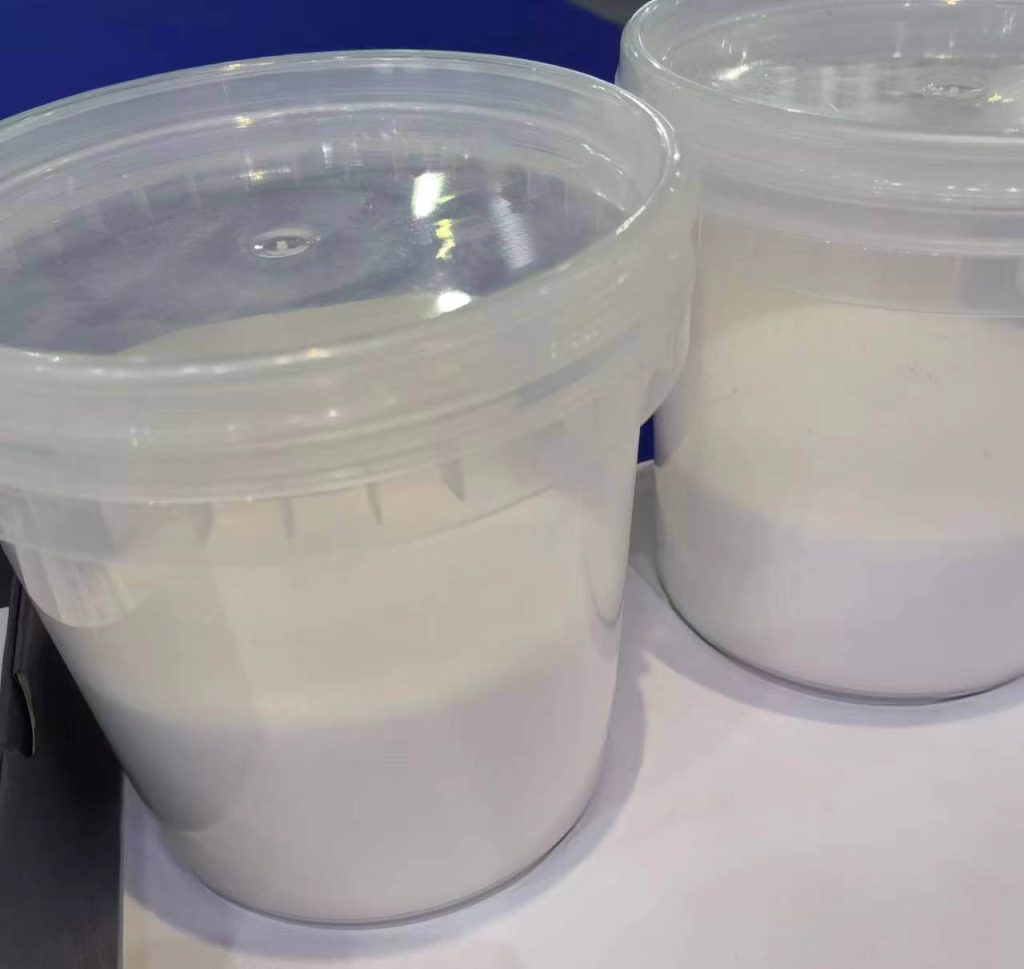HPMC
Hidroksipropil metilceluloza
Ako pitate kolika je viskoznost hidroksipropil metilceluloze, dostupan je u nizu stupnjeva viskoznosti od 4000 do 100,000 mPa s, koriste se za stvaranje hidrofilnih matričnih sustava. Ako pitate za što se koristi hidroksipropil metilceluloza? U području farmaceutike, HPMC pronalazi primjenu u povećanju topljivosti putem čvrste disperzije, djelujući kao vezivo u procesima granulacije i pridonoseći formulacijama s modificiranim otpuštanjem, i djeluje kao sredstvo za viskolizaciju.
Ima ključnu ulogu kao emulgator i pojačivač viskoznosti u kapima za oči. Ova polusintetika, inertan, viskoelastični polimer također nudi višenamjenska svojstva poput podmazivanja, pojačanje pjene, stabilizacija, i formiranje filma. Dobiva se iz prirodne celuloze nizom kemijskih procesa, Hidroksimetil celuloza izgleda kao bijeli do blago bjelkasti vlaknasti ili granulirani prah.
Kemijski modificirani hidrogelovi na bazi celuloze |HPMC
Što je hidroksipropil metilceluloza? Ističe se kao kemijski modificirani hidrogel na bazi celuloze iznimnih svojstava. Celuloza, uz srodne biopolimere poput hitina i hitozana, čini temelj ovih hidrofilnih materijala. Ovi hidrogelovi pokazuju jedinstvenu sposobnost upijanja i zadržavanja značajnih količina vode unutar intersticijskih prostora svojih struktura.
Ugradnja hidroksipropil metilceluloze u formulacije hidrogela iskorištava njezinu inherentnu hidrofilnu prirodu. Ova karakteristika omogućuje hidrogelovima na bazi HPMC-a da učinkovito iskoriste vodu, što dovodi do njihovog impresivnog bubrenja i sposobnosti zadržavanja vlage. Štoviše, kemijski modificirana priroda HPMC-a daje poboljšanu stabilnost i kontrolu nad fizičkim svojstvima hidrogela, što ga čini izvrsnim kandidatom za široku lepezu aplikacija.
Hidroksipropil metilcelulozni hidrogelovi su relevantni u brojnim područjima zbog svoje prilagodljivosti i svestranosti. U biomedicini, ovi se hidrogelovi istražuju zbog svog potencijala u sustavima kontrolirane isporuke lijekova. Porozna struktura hidrogelova na bazi hidroksimetil celuloze omogućuje inkapsulaciju i kontinuirano oslobađanje terapeutskih sredstava, pridonoseći poboljšanim modalitetima liječenja. Sposobnost upijanja vode hidroksipropil metilceluloze također proširuje njenu upotrebljivost na boje, premazi, i proizvodnja ljepila.
Kemija
Koja je kemijska formula hidroksipropil metilceluloze ako smijete pitati? Inkapsuliran je unutar svoje kemijske formule C56H108O30, koji pruža snimku njegove zamršene molekularne strukture. Ovaj spoj, također poznat kao hipromeloza, utjelovljuje izvanrednu fuziju elemenata koji podupiru njegovu višestruku funkcionalnost i primjenjivost.
Amalgamacija hidroksipropila i metilceluloze označava dvostruke modifikacije prisutne unutar HPMC-ove molekularne arhitekture. Hidroksipropilne skupine uvode hidrofilnu prirodu, omogućujući upijanje i zadržavanje vode, dok aspekt metilceluloze dodaje strukturnu stabilnost i kontrolu nad svojstvima poput viskoznosti.
HPMC je celulozni eter koji ima karakterističnu promjenu u temeljnoj strukturi celuloze. Ova promjena uključuje stratešku supstituciju hidroksilnih skupina koje se nalaze unutar celuloznog prstena. Posebno, jedna ili više od tri hidroksilne skupine prisutne u celuloznom prstenu prolaze kroz ovu transformaciju, što je dovelo do stvaranja HPMC-a.
Ova molekularna modifikacija celuloze daje hidroksipropil metilcelulozi HMPC niz izvanrednih svojstava. Uvođenje hidroksipropilnih i metilnih skupina ne samo da daje hidrofilnost, već također uvodi određeni stupanj hidrofobnosti, što rezultira fino podešenom ravnotežom međudjelovanja vode. Ova delikatna ravnoteža leži u srcu HPMC-ove svestranosti i primjenjivosti u raznim industrijama.
Koristi
U kontekstu premaza, Uključivanje hidroksimetil celuloze nudi dvostruku korist umjerene vlage i svojstava barijere za kisik. Ova kvaliteta je najvažnija u scenarijima gdje je zaštita podloga od vlage i kisika kritična. Ova svojstva barijere doprinose dugotrajnosti premazanih površina, čineći premaze na bazi HPMC-a idealnima za primjene u rasponu od strukturne zaštite do dekorativnih završnih obrada.
Ugradnja HPMC-a u arhitektonske premaze daje dugotrajnost i vizualnu privlačnost. Od vanjskih boja koje su okrenute prema elementima do unutarnjih premaza koji zahtijevaju i estetiku i zaštitu, HPMC igra značajnu ulogu u ispunjavanju zahtjeva arhitektonske industrije.
Osim premaza, HPMC pronalazi korisnost u formulacijama ljepila. Njegova sposobnost povećanja viskoznosti, osigurati snagu vezivanja, i pridonijeti ukupnoj učinkovitosti ljepila pozicionirao ga je kao vrijedan sastojak u proizvodnji ljepila. Druge upotrebe HMPC-a su sljedeće:
- Cementne žbuke
- Boje i premazi
- Hrana
- Kozmetika
- Kapi za oči
- Deterdženti i sredstva za čišćenje
- Ljepila za pločice
Prednosti korištenja HPMC-a
Jedan od istaknutih doprinosa hidroksimetil celuloze leži u njezinoj sposobnosti da poboljša plastičnost ljepila za pločice. Ovo svojstvo mijenja ponašanje ljepila, čineći ga savitljivijim i svestranijim. Povećana plastičnost znači bolje prianjanje na površine, olakšavajući pravilno poravnavanje i postavljanje pločica tijekom postavljanja.
HPMC je hidrofilan, biorazgradiv, a biokompatibilni polimer nudi niz prednosti koje ga čine neprocjenjivim sredstvom u raznim sektorima, uključujući dostavu lijekova, boje i boje, kozmetika, ljepila, premazi, poljoprivreda, i tekstila.
Jedna od ključnih osobina HPMC leži u njegovoj hidrofilnoj prirodi, čineći ga topljivim u vodi. Ova kvaliteta postaje osobito značajna u primjenama gdje su poželjna rješenja na bazi vode. Ovo se svojstvo koristi u raznim industrijama, u rasponu od farmaceutskih proizvoda do kozmetike, gdje učinkovita disperzija i otapanje hidroksimetil celuloze povećavaju učinkovitost proizvoda.
HPMC-ova biorazgradiva i biokompatibilna svojstva besprijekorno su usklađena sa sve većim naglaskom na održiva i ekološki prihvatljiva rješenja. Kao biorazgradivi polimer, Hidroksipropil metil celuloza doprinosi smanjenju utjecaja proizvoda i procesa na okoliš. Štoviše, njegova biokompatibilnost utire put sigurnoj uporabi u medicini i kozmetici, osiguravajući minimalne štetne učinke na ljudsko zdravlje.
Učinak dodavanja nano-materijala na svojstva hidroksipropil metilceluloze
Uvođenje nanomaterijala, kao što su brkovi, u HPMC matrice rezultira nanokompozitnim filmovima s superiornom vodenom barijerom i mehaničkim svojstvima u usporedbi s čistim HPMC filmovima. Ovo poboljšanje svojstava vodonepropusnosti je od posebnog značaja u primjenama gdje je otpornost na vlagu najvažnija. Dodatno, poboljšana mehanička svojstva daju folijama trajnost i otpornost, širenje njihove potencijalne upotrebe u industrijama u kojima je robusnost ključna.
Vrijedno je napomenuti da iako ugradnja nanomaterijala može poboljšati učinkovitost filmova na bazi hidroksipropil metil celuloze, moglo bi doći do kompromisa u smislu transparentnosti. Nanokompozitni filmovi, unatoč njihovim poboljšanim atributima, može pokazati marginalno smanjenje transparentnosti. Ova delikatna ravnoteža između performansi i estetike postaje presudno razmatranje u industrijama u kojima je vizualna privlačnost ključna, kao što su pakiranje ili zasloni.
Tehnički podaci
HPMC je bijeli do blago bjelkasti vlaknasti ili granulirani prah. Ovaj vizualni atribut nije samo karakterističan za HPMC, već je i bitan za njegovo prepoznavanje i učinkovito korištenje u različitim primjenama. Prividna viskoznost a 2% težina prema težini (w/w) HPMC otopina određena je unutar raspona od 4 do 6 centipoaz (cps). Ovo mjerenje viskoznosti pruža uvid u sposobnost hidroksipropil metil celuloze da utječe na protok i konzistenciju otopina u različitim primjenama.
Specifikacija postojanja hidroksipropil metilkululoze “netopljiv u vodi” je definirajući atribut. Ova je karakteristika ključna u različitim primjenama gdje je poželjna otpornost na vodu. Specifikacija definira sadržaj hidroksipropoksi u rasponu od 7 do 12%. Najveći gubitak pri sušenju naveden je kao 10%. Još jedna značajna specifikacija je bezmirisnost HPMC-a. Odsutnost mirisa doprinosi njegovoj kompatibilnosti s aplikacijama gdje je neutralnost mirisa ključna, kao što je u hrani, farmaceutski, i kozmetičke industrije.
Njihova svojstva zgušnjavanja i vezivanja čine ih vrijednim komponentama u sektorima koji zahtijevaju povećanu adhezivnu snagu i povećanu viskoznost. Visoki stupnjevi viskoznosti izvrsni su u primjenama koje zahtijevaju stabilnost u izazovnim okruženjima. Bilo da se radi o bojama, premazi, ili ljepila izložena teškim uvjetima, ovi stupnjevi osiguravaju potrebnu strukturnu cjelovitost i otpornost.
Sigurnosne informacije
Pri radu s hidroksipropil metilkululozom, potreban je oprez kako bi se spriječilo stvaranje prašine. Udisanje prašine proizvoda, posebno sitne čestice, trebalo bi izbjegavati. Ova preventivna mjera neophodna je za zaštitu zdravlja i dobrobiti pojedinaca koji rukuju HPMC-om, jer udisanje fine prašine može predstavljati respiratorne rizike.
Ključno sigurnosno razmatranje uključuje izbjegavanje izravnog kontakta s prašinom proizvoda. Ovom praksom minimalizira se mogućnost iritacije kože ili preosjetljivosti koja bi mogla nastati uslijed kontakta s česticama u zraku. Prekoračenje koncentracije prašine u zraku 20 mg/l nose rizik od izazivanja opasnosti od eksplozije prašine. Ovo naglašava važnost pravilnog rukovanja i postupaka zadržavanja, sprječavanje nakupljanja prekomjerne koncentracije prašine koja bi potencijalno mogla dovesti do opasnih situacija.
Tijekom toplinske obrade, mora se uzeti u obzir potencijalno ispuštanje para ili dima. Za održavanje sigurnosti, pojedincima se savjetuje da izbjegavaju udisanje ovih para ili para. Pravilna ventilacija i zaštitna oprema ključni su za ublažavanje svih povezanih rizika.
Zaključci
U zaključku, Hidroksipropil metilceluloza Hidroksipropil metil celuloza utjelovljuje svestranost u svom najistinitijem obliku. Kako se industrije razvijaju i traže rješenja koja spajaju inovaciju sa sigurnošću, HPMC nastavlja igrati vitalnu ulogu, spajanje poboljšanih svojstava, pojednostavljeni procesi, i obećavajuće mogućnosti. Njegova prisutnost u različitim sektorima ponovno potvrđuje njegov status katalizatora napretka.
Prednosti hidroksipropil metilkululoze sežu nadaleko, bilo kroz njegovu ulogu u poboljšanju plastičnosti ljepila za pločice ili njegovu biokompatibilnu i hidrofilnu prirodu koja je u skladu s održivim praksama. Kako se nanomaterijali pridružuju jednadžbi, Svojstva HPMC-a dalje se razvijaju, uvodeći poboljšane performanse uz postizanje ravnoteže između funkcionalnosti i estetike.
Specifikacije i sigurnosne smjernice hidroksipropil metil celuloze naglašavaju važnost pažljivog rukovanja ovim spojem. Vizualni identitet, viskoznost, i kemijski sastav naglašavaju njegove jedinstvene osobine, dok sigurnosne mjere naglašavaju sprječavanje stvaranja prašine, pažljive prakse udisanja, i oprez tijekom toplinske obrade.
Očekujemo vaš upit o HPMC-u.


